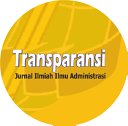Analisis Loyalitas Pelanggan di PT Nutrifood, Kotamadya Bogor
DOI:
https://doi.org/10.31334/trans.v1i2.302Keywords:
Customer Loyalty, PT Nutrifood, Products, Quality, LoyalityAbstract
Entering the era of milenimum to 3, each company including PT Nutrifood faced with the burden of a very tight competition, given the flourishing number of similar companies. To be able to still exist, developed and developing, and come out as winners in the era of global competition, every company is required to have comparative and competitive advantages are high. One of them is a strategy on how to keep your customer or customers remain loyal and faithful to the products they offer. Dynamic market conditions, manufacturers incentive to issue new products, and combined with the trend of people who like to try, then it creates loyalty is a very heavy task, because consumers like to try new things. PT Nutrifood feel this phenomenon and there are fears a time when consumers turn to similar products produced by other companies. Moreover, intense competition, often consumers switch to other products from other companies, either because of considerations selection of better quality, prices are relatively cheaper, the quality of the packaging is better, tastes better, and also just try switching curiosity or curious and want to try other products. This study uses quantitative methods.
The study population was a customer PT Nutrifood, Bogor municipality, which amounted to 77 people with acendential sampling method, the sampling is based on the fact that they happen to appear. Each respondent was given 10 questions to answer gradation using a Likert scale, while research conducted around the month of March 2018. From this research it is known that customer loyalty PT Nutrifood categorized as good, which is indicated by a score average achieved penapsiran figure of 3.89. With the results of these studies are expected to PT Nutrifood minimal customer loyalty can be maintained, even need to be improved better by improving customer satisfaction through improved quality of service.
References
Ahmad Mardalis, 2005, â€Meraih Loyalitas Pelangganâ€, Benefit: Jurnal Manajemen dan Bisnis, FE UMS Surakarta, Volume 9, No. 2, Desember, p. 111-119.
Alida Palilati, 2004, “Pengaruh Tingkat Kepuasan Terhadap Loyalitas Nasabah Tabungan Perbankan Di Wilayah Etnik Bugisâ€, Jurnal Ekonomi, Universitas Haluoleo, Kendari, Volume 1, Nomor 2, Maret 2004. (http://www. pascaunhas.net)
Barnes, James G., 2003, Secrets of Customer Relationship Management (Rahasia Manajemen Hubungan Pelanggan, alih bahasa : Andreas Winardi, Andi Offset, Yogyakarta.
Basu Swastha DH. dan Irawan, 2001, Manajemen Pemasaran Modern, Liberty, Yogyakarta. Cooper, Donald R. and C. William Emory, 1995, Business Research Methods, 5th Ed, Chicago :
Richard D. Irwin, Inc. Freddy Rangkuti, 2004, Flexible Marketing, PT. Gramedia Pustaka Utama, Jakarta.
Gefen, David, 2002, “Customer Loyalty in E-Commerceâ€, Journal of the Association for Information Systems, Volume 3, p.27-51. (http://bebas.vlsm. org)
Hendri Ma’ruf, 2006, Pemasaran Ritel, PT. Gramedia Pustaka Utama, Jakarta.
Jogiyanto, 2004, Metodologi Penelitian Bisnis: Salah Kaprah Dan Pengalaman Pengalaman, BPFE, Yogyakarta.
Kotler, Philip, 2000, Manajemen Pemasaran, Analisis, Perencanaan, Implementasi dan Kontrol Jilid 1, Alih bahasa: Imam Nurmawan, Edisi Ketiga, PT. Prenhallindo, Jakarta.
Mowen, John C. dan Minor, Michael, 2002, Perilaku Konsumen, Alih bahasa: Dwi Kartini Yahya, Erlangga, Jakarta.
Muafi, 2003, “Mengelola Kepribadian Merekâ€, Jurnal Telaah Bisnis Akademi Manajemen Perusahaan YKPN, Yogyakarta Volume 4, Nomor 1, Juli
Riana Iswari dan Retno Tanding Suryandari, 2003, “Analisis Pengaruh Citra Supermarket terhadap Loyalitas Konsumenâ€, Jurnal Bisnis dan Manajemen UNS, Vol. 3, No. 2, Surakarta, November.
Downloads
Published
Issue
Section
License

This work is licensed under a Creative Commons Attribution-ShareAlike 4.0 International License
Please find the rights and licenses in Transparansi : Jurnal Ilmiah Ilmu Administrasi By submitting the article/manuscript of the article, the author(s) agree with this policy. No specific document sign-off is required.
- License
The commercial use of the article will be governed by the Creative Commons Attribution license as currently displayed on Creative Commons Attribution-ShareAlike 4.0 International License.
2. Author(s)' Warranties
The author warrants that the article is original, written by stated author(s), has not been published before, contains no unlawful statements, does not infringe the rights of others, is subject to copyright that is vested exclusively in the author and free of any third party rights, and that any necessary written permissions to quote from other sources have been obtained by the author(s).
3. User Rights
Transparansi : Jurnal Ilmiah Ilmu Administrasi spirit is to disseminate articles published are as free as possible. Under the Creative Commons license, Transparansi : Jurnal Ilmiah Ilmu Administrasi permits users to copy, distribute, display, and perform the work for non-commercial purposes only. Users will also need to attribute authors and Transparansi : Jurnal Ilmiah Ilmu Administrasi on distributing works in the journal and other media of publications.
4. Co-Authorship
If the article was jointly prepared by more than one author, any authors submitting the manuscript warrants that he/she has been authorized by all co-authors to be agreed on this copyright and license notice (agreement) on their behalf, and agrees to inform his/her co-authors of the terms of this policy. Transparansi : Jurnal Ilmiah Ilmu Administrasi will not be held liable for anything that may arise due to the author(s) internal dispute. Transparansi : Jurnal Ilmiah Ilmu Administrasi will only communicate with the corresponding author.
5. Miscellaneous
Transparansi : Jurnal Ilmiah Ilmu Administrasi will publish the article (or have it published) in the journal if the article’s editorial process is successfully completed. Transparansi : Jurnal Ilmiah Ilmu Administrasi editors may modify the article to a style of punctuation, spelling, capitalization, referencing and usage that deems appropriate. The author acknowledges that the article may be published so that it will be publicly accessible and such access will be free of charge for the readers as mentioned in point 3.
Every accepted manuscript should be accompanied by "Copyright Transfer Agreement"prior to the article publication.











